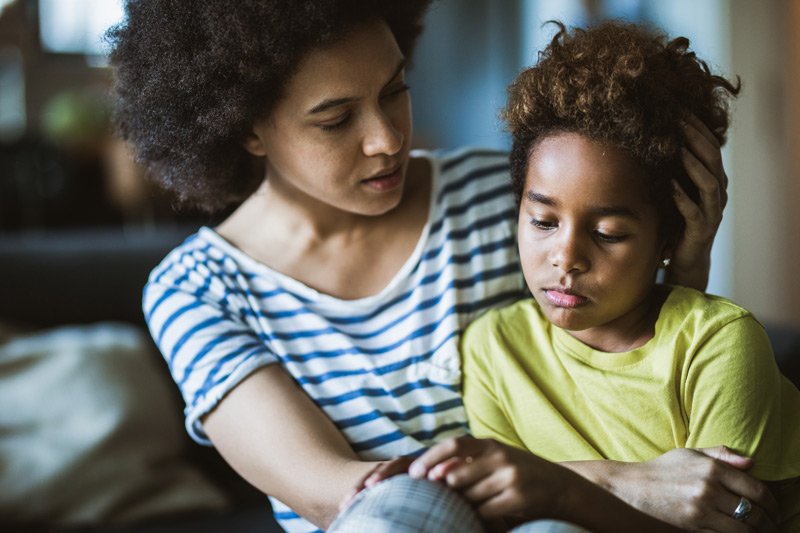How to Help Your Children Manage Their Emotions
Emotions can be complex and hard to understand. They can also be difficult to manage and process. Yet, we all have them and experience them throughout our lifetime (even the emotions that are hard to feel).
When working with children, I try to reframe what it means to feel various emotions. Rather than labeling them as “good” or “bad,” it is important to recognize that it is crucial to feel all kinds of emotions — even though it can be difficult. It is important for children to learn and understand it’s normal to experience all emotions and find healthy ways to manage them.
I have met with caregivers who have expressed concerns about certain behaviors their children have exhibited. I often talk with them about how these behaviors are a child’s way of communicating. Our job as caregivers is to figure out what the child is trying to tell us. Oftentimes, behaviors occur because children do not know what to do with their feelings. Taking time to teach children about their feelings and what they can do with those emotions can lead to behavioral improvements.
Here are techniques I often suggest to caregivers that can help children learn to cope with and manage their feelings:
- Label you and your child’s feelings. This helps normalize the presence of emotions and helps your child recognize what different emotions feel like in their body.
- Teach your child about different coping skills they can use to manage their emotions. Even young children can regulate their emotions and energy.
- Create a calm space for your child to soothe their body and emotions. This can be a space that houses coping tools for your child to use when they notice they are feeling big feelings. It can also proactively help prevent the buildup of emotions and energy.
- As parents and caregivers, model healthy coping skills with your own emotions. Our children learn by observing us and will often do what we do.
- Read children’s books about emotions and how to manage different feelings. Children’s books can be a great way to talk with your children about complex concepts in a way they can understand.
Here are examples of coping skills children can use to help them when they are feeling frustrated, sad, angry, anxious, worried, scared, or upset:
- Deep breathing
- Writing or drawing about their thoughts and feelings
- Imagery (visualize being in one of their favorite places)
- Physical activity (moving their bodies help in managing emotions)
- Listening to music
- Squeezing a stress ball or squishy
- Mindfulness techniques (mindful beathing, guided imagery, progressive muscle relaxation)
- Walking away/taking a break
- Talking to someone about what they are thinking or feeling
- Practicing a hobby (doing something they enjoy)
Resources
Here are links to articles that give more information about helping children learn about emotions and managing their big feelings:
- Talking About Your Feelings (for Kids)
- What to Do When You Feel Sad (for Kids)
- Yoga for Lowering Stress (for Kids)
- Everybody Gets Mad: Helping Your Child Cope with Conflict
- Just Breathe: The Importance of Meditation Breaks for Kids
- Music and Mood
Here are children’s books that you can read to your child to help learn about different feelings and what to do when they feel them:
